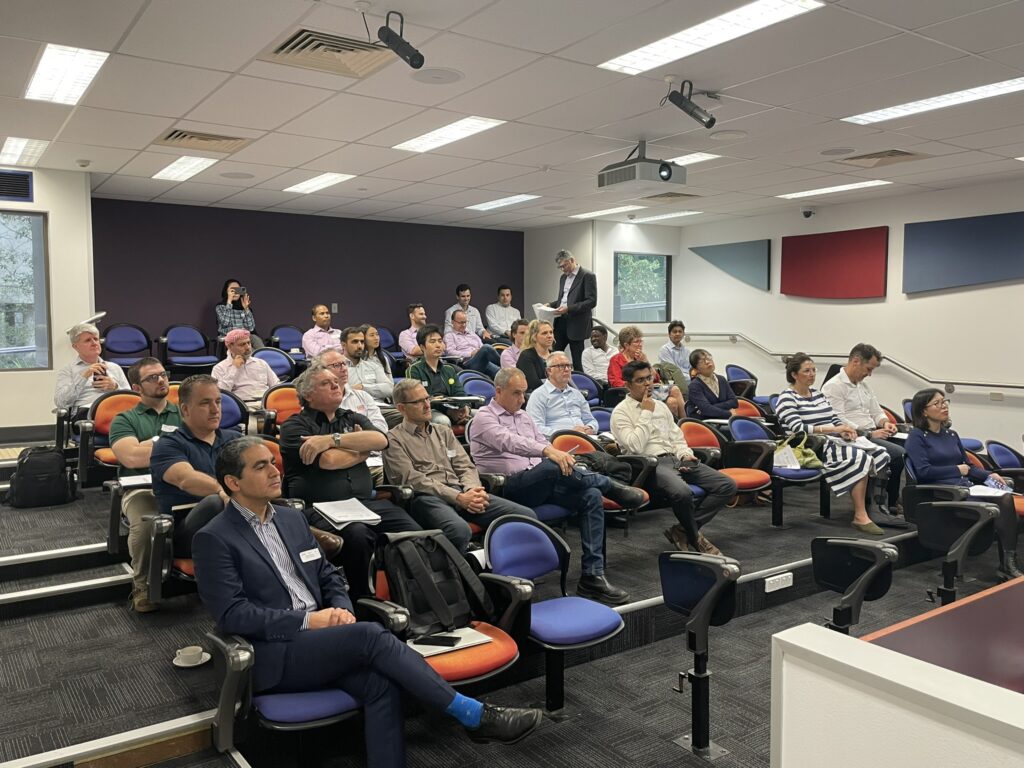Event date: September 13, 2024
On 13th of September, the Decarbonising the Building Industry workshop, titled “The Role of Forests in Decarbonising the Construction Industry,” brought together a diverse group of experts to explore how forests and timber-based materials can contribute to a more sustainable future for construction. The event, supported by the Australian Certified Timber initiative, delved into the opportunities and challenges of integrating forest products into the building industry as part of broader decarbonisation efforts.

Professor Hong Guan, Griffith University
Professor Hong Guan opened the workshop by emphasizing the importance of the government’s commitment to achieving net zero emissions by 2050 and how timber plays a critical role in that journey. Guan discussed Griffith University’s leading role in sustainability and research excellence, highlighting how the institution integrates environmental sustainability into its strategic objectives. From the use of native vegetation to carbon sequestration practices on their campuses, Guan underscored the potential of timber as both a sustainable building material and a tool for reducing carbon emissions through innovative structural applications like hybrid timber-steel elements.
Dr. Behzad Rismanchi and Professor Tuan Ngo, University of Melbourne
Dr. Behzad Rismanchi and Professor Tuan Ngo provided insights into the Decarbonising the Building Industry (DBI) initiative, which focuses on fostering collaboration between academia and industry. This network brings together local universities, international partners, and industry experts to address the carbon footprint of the construction sector through policy, materials, and design innovations. Ngo stressed the importance of addressing both embodied and operational carbon in buildings, particularly in light of Australia’s target to build over one million homes in the coming years.
Matt de Jongh, Responsible Wood
Matt De Jongh focused on forest and chain of custody certification, explaining how Responsible Wood governs sustainable forest management and ensures the traceability of timber products from the forest to the end consumer. De Jongh highlighted the role of certification in preventing deforestation and maintaining biodiversity, while also supporting sustainable building practices. The growing demand for responsibly sourced timber in construction projects was linked to environmental and carbon mitigation benefits.
Simon Dorries, Responsible Wood
Simon Dorries provided a detailed look at upcoming ISO standards related to timber and wood products. He introduced three critical new standards that will support the calculation of carbon sequestration in forests and the displacement of carbon-intensive materials like steel and concrete. Dorries underscored the potential for timber products to store carbon throughout their lifecycle, positioning wood as a central player in reducing the construction industry’s carbon footprint.
Bill Leggate, DAF Forest Product Innovations Group
Bill Leggate addressed the challenges and opportunities related to the supply of Australian forest resources for construction. While demand for timber is expected to quadruple over the next 30 years, Leggate emphasized the need for more efficient use of forest resources, including expanding the role of engineered wood products. He discussed the growing gap between demand and supply and suggested that innovation in timber processing could bridge this divide, ensuring that wood plays a central role in decarbonising the built environment.
Stephen Mitchell, Environmental Product Declaration Australasia
Stephen Mitchell discussed the significance of Environmental Product Declarations (EPDs) in providing transparent and standardized data about the environmental impacts of building materials, including timber. He explained that EPDs help businesses make more sustainable decisions by offering a life cycle assessment of products, covering embodied carbon emissions and biogenic carbon stored in wood. Mitchell emphasized the growing global trend towards adopting EPDs, especially in construction, where they are essential for calculating and comparing the environmental performance of materials. He also shared insights on how EPDs are being used in major projects, such as the T3 Collingwood project, which achieved a significant reduction in embodied carbon through the use of sustainably managed timber products.
Monica Richter, WWF and MECLA
Monica Richter framed her presentation around the transition from an industrial to a regenerative economy, where timber and forestry can contribute significantly to climate solutions. She advocated for greater collaboration across supply chains, linking industry players to drive demand for engineered timber and other sustainable materials. Richter’s vision for a regenerative future emphasized both the environmental and financial potential of timber in achieving decarbonisation goals
The workshop provided a comprehensive overview of how forests and timber products can support the decarbonisation of the construction industry. By integrating timber into building projects, from structural elements to innovative materials, the industry can significantly reduce its carbon footprint. The presentations emphasized collaboration, sustainable forest management, and innovation in timber technology as essential components in meeting future building demands while addressing climate challenges.

